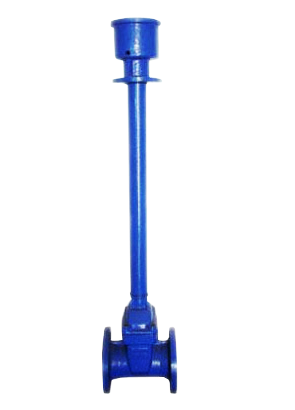Buried soft-seated gate valves are critical valves widely employed in pipeline systems, featuring unique designs and functionalities that render them extensively utilized across various industrial and domestic applications.

Working principle
The working principle of buried soft-seated gate valves is based on the sealing performance between the gate and the sealing surface. When the valve is in the closed position, the gate is pushed against the sealing surface by the actuating mechanism, typically a handwheel or electric actuator, achieving complete closure of the pipeline. When it is necessary to open the valve, the actuating mechanism pulls the gate away from the sealing surface, allowing the medium to flow freely in the pipeline.
Structural characteristics
1. Subterranean Design: Buried soft-seated gate valves are typically installed underground within pipeline systems to shield the valves from external environmental impacts. Simultaneously, this design maximizes space conservation and ensures unobstructed pipeline flow.
2. Soft-Sealing Structure: Soft-sealing materials typically utilize rubber or polymers, offering excellent sealing performance and corrosion resistance. They can maintain a stable sealing effect across various media and temperatures.
3. High Pressure Endurance: The design structure of buried soft-seated gate valves is robust, capable of withstanding high pressure and impact forces, ensuring stable and reliable operation under various operating conditions.
4. Anti-corrosion Coating: Valves are typically coated with anti-corrosion coatings on their surfaces to enhance durability and lifespan, thereby reducing maintenance costs.
5. Complete Accessory Configuration: Buried soft-seated gate valves are typically equipped with accessories such as handwheels, electric actuators, limit switches, etc., to meet operational requirements under different conditions.
Application area
1. Petroleum and Chemical Industry: Used for control and regulation of crude oil, natural gas, and chemical media.
2. Municipal Water Treatment Systems: Used for flow control and prevention of backflow in municipal water distribution networks.
3. Wastewater Treatment Plants: Used for drainage and regulation in wastewater treatment systems.
4. Thermal Power Plants: Used for flow control in boiler feedwater pipelines and cooling water systems.
5. Urban Heating Systems: Used for regulation and control of heat transfer media in centralized heating networks.
Buried soft-seated gate valves play a crucial role as integral components in pipeline systems across industrial and civilian domains. Their reliable sealing performance, stable structural design, and extensive application areas make them indispensable in pipeline systems. This article aims to help readers gain a comprehensive understanding and application of buried soft-seated gate valves, thereby enhancing the safety and operational efficiency of pipeline systems.